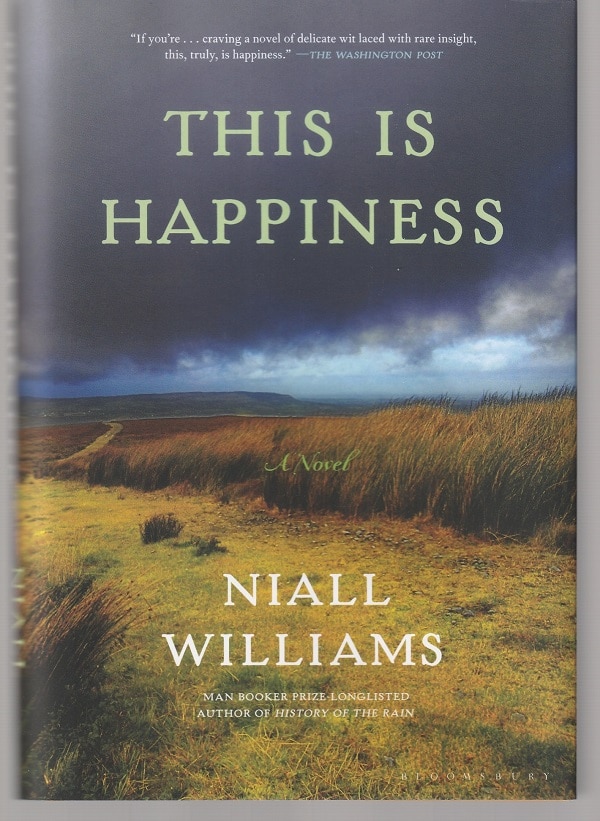In a world where the relentless pursuit of happiness often feels like a mirage, the question emerges: Can true happiness be found in the mundane? This tantalizing query is the linchpin of Niall Williams’s novel, “This Is Happiness,” a tale interwoven with the fabric of life’s quiet moments and extraordinary revelations. Through lush prose and poignant storytelling, Williams reclaims happiness from the grasp of materialism and repackages it as an experience crafted from moments that, at first glance, might seem utterly unremarkable.
Set against the backdrop of a small Irish village poised on the brink of modernization, “This Is Happiness” tells a story that is both profoundly intimate and universally relatable. The narrative is centered on the lives of its inhabitants as they grapple with the impending changes brought about by the arrival of electricity—a metaphorical fulcrum shifting them between tradition and the allure of progress. This serves not only as a backdrop but as a character in its own right, whispering challenges and possibilities to those who dwell in its embrace.
Williams introduces us to a cast of intriguing characters whose lives are imbued with the richness of human emotion. Among them, the elderly figure of Pius is particularly resonant. His reflections on the village’s past offer a tapestry of nostalgia, setting the tone for a story that ponders what it means to be truly content. Through Pius’s eyes, we witness the interplay of joy and sorrow, highlighting the fact that they are not opposites but rather intertwined, integral facets of the human experience. This leads us to ponder: Is happiness a fleeting glimpse of joy, or is it steeped in the acceptance of life’s vicissitudes?
As we traverse through the poignant landscape of Williams’s narrative, the book poses a playful challenge: How do we navigate the tensions between the life we desire and the life we lead? The microcosm of this Irish village encapsulates the broader existential questions that haunt us all. As the villagers confront change, we are reminded of our own struggles. Does the allure of modernity render the simplicity of our joys obsolete? Or can we find solace in the quiet obscurity of our everyday lives, much like the denizens of this charming yet precarious settlement?
While the narrative is lush and reflective, Williams masterfully employs a lyrical quality that captivates the reader from the very first page. His vivid imagery paints a portrait of both the external landscape and the internal struggles of his characters. Each sentence feels intentional, imbued with the weight of thoughtfulness that encourages deeper contemplation. However, it is not just a passive experience; it instigates active engagement with the text, beckoning readers to examine their own attitudes towards happiness in a rapidly shifting world.
Within this spectrum, Williams dares to interrogate the essence of happiness itself. He brings into question how societal influences shape our understanding and pursuit of joy. Does happiness come packaged in the comforts of a modern lifestyle with its conveniences, or does it flourish in simplicity, in the unanticipated moments of connection and understanding? By contrasting these themes, Williams invites readers to reflect on their life’s choices and priorities. Are we chasing ephemeral pleasures, or are we savoring the deeper connections that provide sustenance to our souls?
Moreover, the novel is peppered with delightful vignettes that shimmer with humor and warmth. Williams spry wit enfolds the reader in a sense of camaraderie as characters navigate their joys and sorrows with an authentic humanity that resonates. The interactions among villagers reveal an intricate web of relationships that define the collective experience of community. In a poignant exchange, a character reflects on life’s transience, reminding us that while moments may come and go, the essence of those experiences lingers, shaping who we are.
In light of Williams’s exploration, it becomes increasingly relevant to consider how our own lives mirror the narrative’s themes. How do we, like the residents of the village, forge paths toward finding happiness in simplicity and solidarity amidst the chaos of our contemporary existence? The insight lies in not merely seeking joy, but in embracing the entirety of our human experience—the peaks and the valleys, the laughter and the tears.
The beauty of “This Is Happiness” resides in its ability to affirm the profundity of the ordinary. Readers are encouraged to see beauty in the minutiae of daily life and to find joy in the relationships forged within community. Through Williams’s evocative storytelling, we awaken to the realization that perhaps happiness is not a destination but rather a journey, a mosaic comprised of all the moments—ephemeral yet beautiful—that come together to shape our lives.
In conclusion, “This Is Happiness” is an invitation to reflect deeply on what happiness means in a world increasingly fixated on material gain and transient pleasures. Niall Williams not only poses crucial questions but also captivates with his lyrical narrative. As readers close the book, they are left not merely with a sense of closure but rather an open-ended contemplation about their own pursuits of joy and fulfillment. As they navigate the complexity of their existence, they may find that true happiness lies not just in acclaim or success but in the warmth of shared experiences and the rich, textured moments that flow through the tapestry of life.
